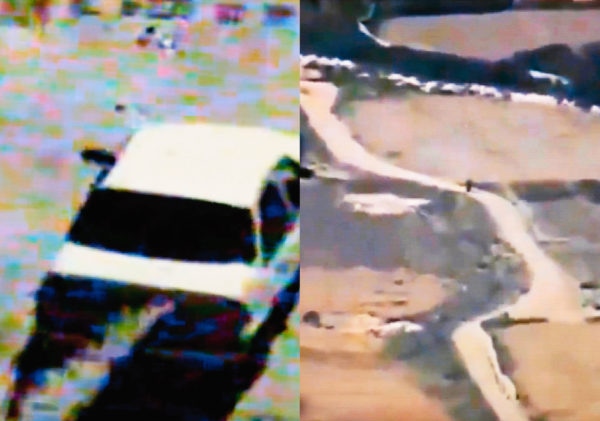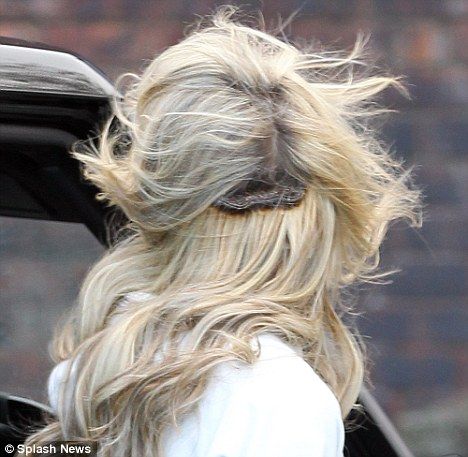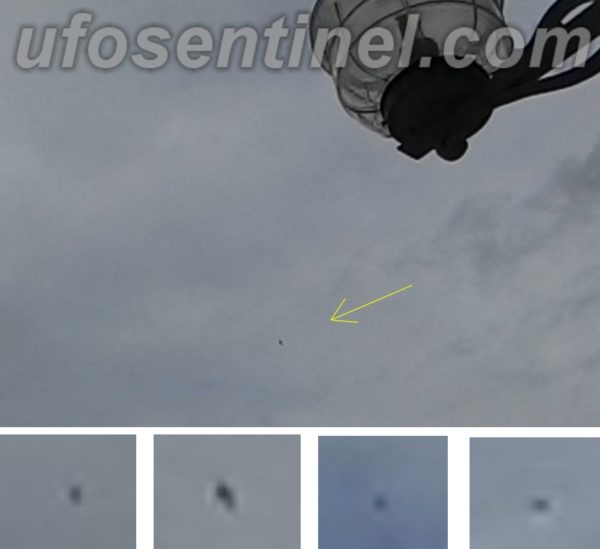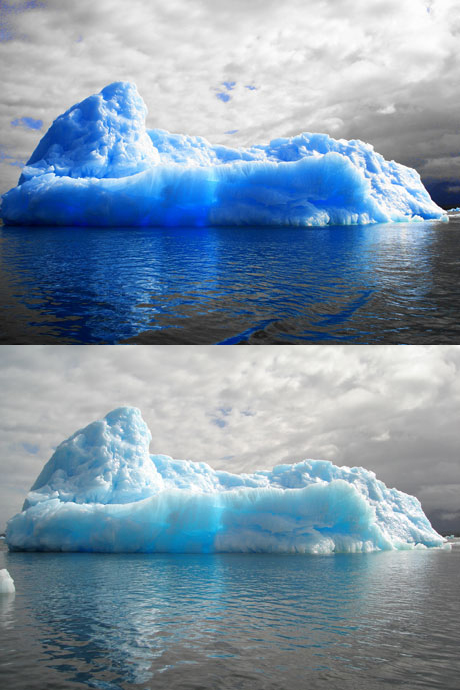As an image researcher Elki Boerdam analyses and rearranges images for her artistic practice. She also works as an image editor for de Volkskrant. Elki was our image curator in October. These are the images she encountered this month and she’d like to share with you:

“These images are part of the work ‘Two donkeys in a war zone’ by artist Clément Lambelet. They are taken from a Youtube video of a military drone recording of an attack on an ISIS camp. Between two explosions, the aircraft’s infrared camera briefly captures two donkeys. This incident led the artist to sift through more drone videos, searching for other unintended details recorded simultaneously during military combat.
This work beautifully demonstrates the concept that an image always captures all elements within the frame of the lens. The frame of the image accidentally registers off-elements that are not the primary target: collateral damage. Lambelet extracts and literally stills these “needless” parts, making them worth looking at. This flipping of hierarchy within images is intriguing: where do images direct our gaze towards and what might we be missing?”

“This is one of my favorite images from my archive, for reasons that are hard to put into words. The emotive powers of an image can be strong and hit me like lightning. Sometimes the most unremarkable images strike me in their fragility.
If I were to put words to what makes this image attractive, I would say it captures my attention because of the accidental gust of wind revealing something hidden. Or the anonymity in this paparazzi picture. But in the process of analysis, images can close and lose their magic. Loosing all the different ways they can be seen. Sometimes it’s better to simply be struck, and let the image itself fill in the blanks.”

“For a while I have been collecting images of unidentified (flying) objects, collected from websites such as the ufosentinal.com. Putting together an archive of images of the unseen. As the photograph was once seen as an undeniable reproduction of reality, the same medium is now used to suggest and even prove the existence of things that might be unseeable. “Capturing” these unconventional realities with a camera make them real and visible to others. This is nothing new: photography has always been used to frame myths and mysteries and served as proof of their existence. Just think of the Cottingley Fairies back in 1917 or the famous surgeon’s photograph of the Lochness monster in 1934.
Images construct our own realities and beliefs whether they are of UFO’s, inauguration attendance or cats in bathtubs. They are a crucial tool for understanding and comprehending things in life, giving us proof of moments that might all of a sudden disappear.”

“The photographer of iceberg number 2 publicly accused the photographer of iceberg number 1, who was the winner in a photo competition, of copyright infringement. Her photo would have been shamelessly copied and photoshopped.
After some investigation it turned out both women were standing next to each other on the same cruise, photographing the same iceberg in almost the same second. Taking almost exactly the same picture.
I think this story displays how complex copyright is today. The right to copy is kind of an empty concept in a world where we record everything, anywhere, anytime. Replicating moments in our lives constantly. The ambition or even demand to be authentic is overruled by our image saturated world, making it almost impossible to create “an original”. Whatever that would be.”